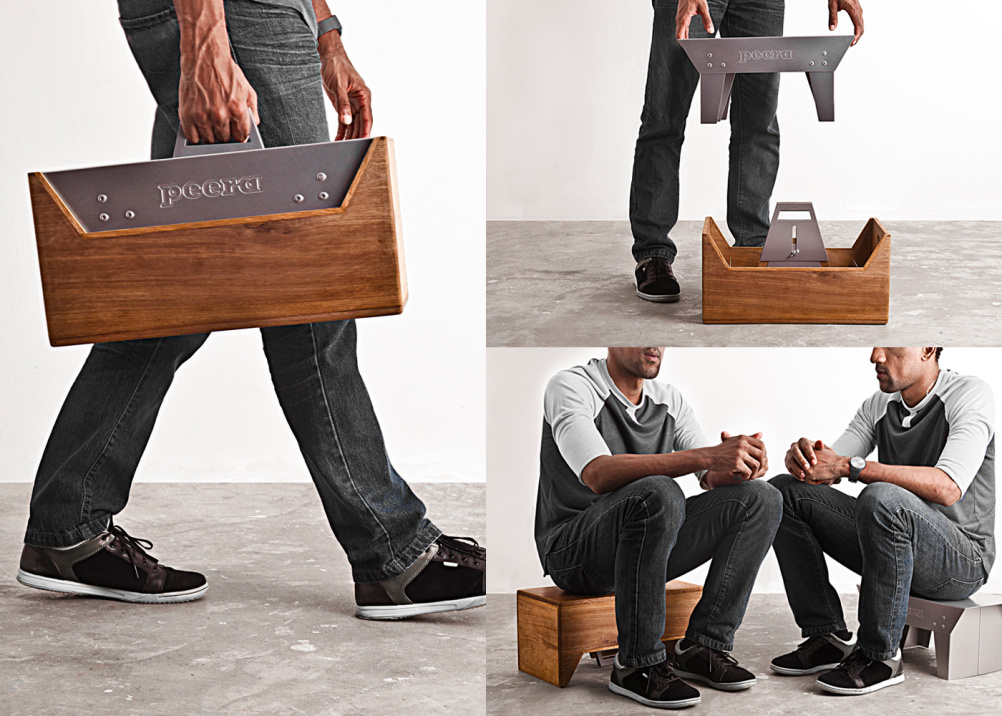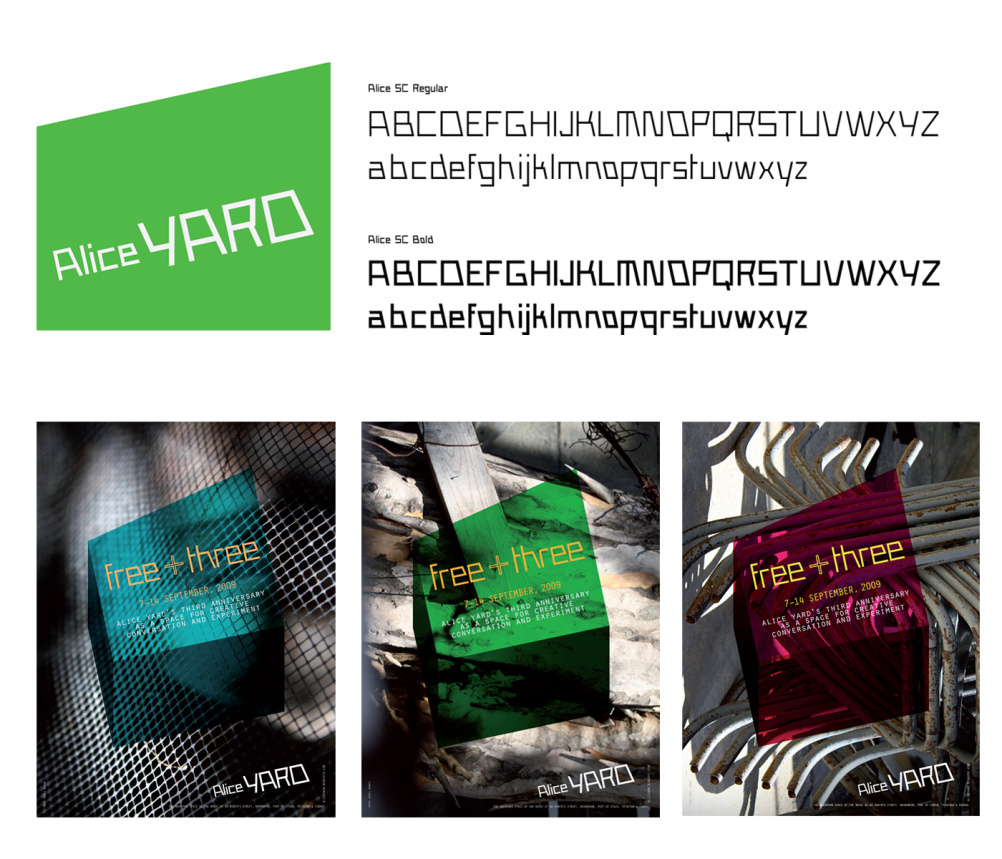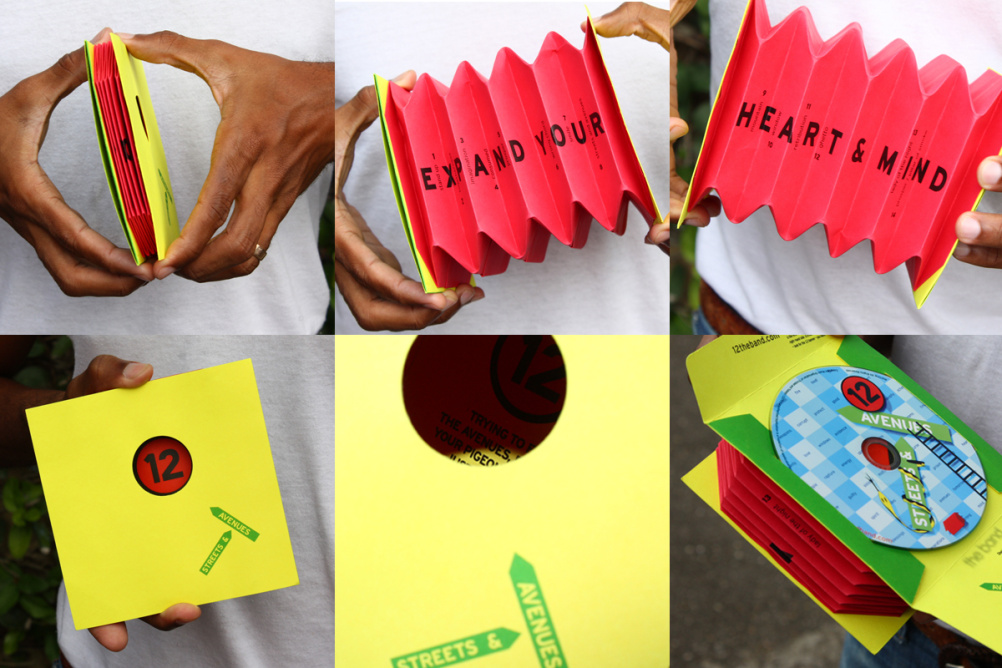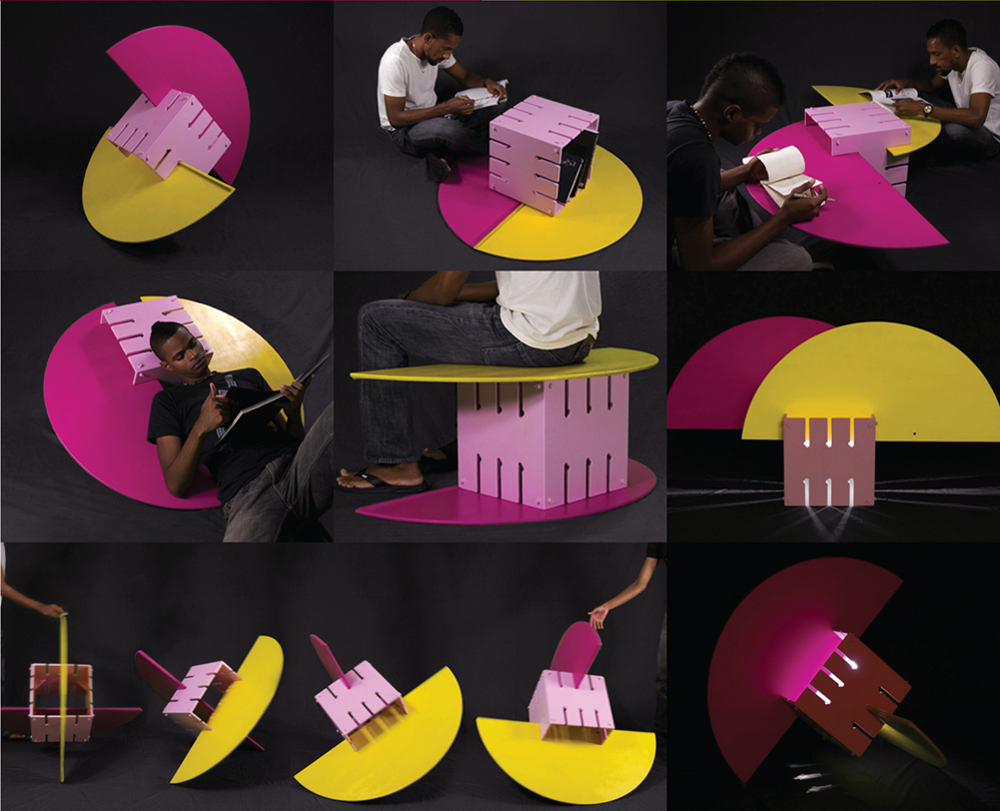Four Corners – an interview with Marlon Darbeau

This month we head to the birthplace of steelpan and calypso music, Trinidad and Tobago. This vibrant melting pot of the Caribbean is home to a rich and diverse community of cultures primarily influenced through colonization and immigration.
It is also a culture steeped in the Arts. With many celebrated sons and daughters such as Nobel Prize-winning authors V.S. Naipaul and Derek Walcott; theatrical talents such as Tony Award winners Geoffrey Holder and Heather Headley; and the fantastic, globally-renowned, carnival costume designer Peter Minshall.
And in design terms, it’s no surprise that the practical crafts that are self-evident in the culture that surrounds the art of ‘The Mas’ tradition of carnival should influence the work of Trinidad & Tobago’s professional designers.
One such creative is multi-disciplinary designer Marlon Darbeau, whose own family background of ‘making things’ informs both his professional and personal work. A man of action, let’s hear it in his own words…
Marlon Darbeau, creative director and designer

Source: Kibwe Brathwaite
What’s your background?
I was born and have lived and worked in Trinidad & Tobago all my life. I attended John Donaldson Technical Institute and I am a graduate of the College of Science Technology and Applied Arts of Trinidad and Tobago. I worked for about five years as a graphic designer at MDC Signs followed by three years freelancing. I then spent six years at CMB Advertising, before becoming creative director of Abovegroup, now AbovegroupOgilvy. I come from a family tradition of making things in a workshop at home. In the last six to seven years I have become very interested in how those traditions intersect with my practice as a graphic designer, and in using this convergence to formulate ways of making my work. This convergence has lead to the creation of self-initiated projects, most notably ‘Peera’ a reinterpretation of a traditional small bench, which has been exhibited at the Museum of Art & Design NY The Global Africa Project.

How did you get started in design?
I actually started off soon after school, taking a course in fabric design which led to a few years of hand-painting T-shirts; really fun times. When I was around 19 and enrolled part time at John Donaldson Technical Institute, a friend stopped by my home where I had a small studio space in my father’s metal workshop. He happened to mention that the sign company where he had been working as a salesman needed a graphic designer. With no computer experience and my portfolio filled with drawings and paintings I interviewed for the job and got it. My training at school at the time did not involve any software tools so I enrolled in a short course to get my Adobe Illustrator skills so it was really on the job training. This is before plotters were introduced locally, so you outputted your artwork via a desktop printer then projected the image on to large paper on the studio wall, and then you would produce actual-size drawings for the production team. The great thing about being a designer in a signage workshop is that you are very much part of the manufacturing process. This has been a major influence on my practice as it taught me about the process of making ideas tangible.

What challenges did you face in getting into the industry and achieving your ambitions?
I will say the most difficult thing in Trinidad & Tobago as a graphic designer is developing your own visual language. Unlike other places where you can see clear articulations of design styles, we have a sort of sameness. Operating in an industry with no professional design association can be hard. Where there is no collective agenda to improve design as a professional craft, designers, clients and the public don’t fully benefit, it’s a sort of hit and miss. I was not interested in doing things the way others were doing it, I believe design is a professional craft and I really wanted to develop a way of thinking and expressing ideas through client and personal work. That is very challenging when you are operating in an industry where the role of design has not been formally considered; it takes a lot to avoid being sucked into advertising despondency and economic necessity.
Who are your greatest inspirations and influences?
I feel very fortunate to have met some really great people over the last 18 years, all of whom have been so influential. From Val Ramcharan, my design lecturer at John Donaldson who pushed me to explore and develop my design sensibilities. Graphic designer Richard Rawlins who basically said to me one day ‘ start making all those ideas you have in your sketch book don’t keep them locked away’ which lead to my first one man show ’EnRoute…of bridges and barriers’ an expression of design being used for more than just selling things, it was attempt to address social concerns. Back in 2008 while working with the likes of Richard Rawlins, Dave Williams, Daryn Boodan, Rodell Warner and Damian Libert, we became an informal but very active collective, each person having their individual creative ambitions yet were able to come together to develop our own practices while affecting our visual landscape, that was a significant moment in my life. The architect Sean Leonard, who has been a mentor and friend. The work of Stefan Sagmeister, Steve Ouditt and Christopher Cozier.

What is the project you are most proud of?
‘Verb’, a multifunctional object I created and showed in New Orleans in 2009, is very close to my heart as I created that project while trying to design a symbol for myself. The object is a physical manifestation of the graphic I created, symbolising a dance between intent and intuition. Another project is Peera as it really solidified my way of working through process, resulting in my conviction to design BY MAKING.

What would be your dream job or project?
I will love to design the identity for a football team as well as design and produce a project directly inspired by the mailboxes my dad manufactures.
Please name some people in your field that you believe deserve credit or recognition.
I think Gareth Jenkins and Alex Smailes deserve a lot of credit for what their company Abovegroup (studio with a focus on design and branding) did here at home. Most designers go to work for advertising agencies, which is fine, but there are so many who would love the opportunity to practice design in a particular way which the agency model does not facilitate, and these guys created a model that gave designers the opportunity to focus on design outside of campaigns. Their process opened a conversation about the improvement of design as a professional practice and lead to the transformation of some of Trinidad & Tobago’s small, medium and large organizations.
What’s your best piece of advice for those wanting to follow in your footsteps?
’’Design is work.’ Don’t be afraid to explore it’s possibilities, care about what you do, work at your craft and be honest.
What’s next for you?
I am working on two new projects, a commission and a self-initiated project, really exciting.
You can see more of Marlon Darbeau’s work at www.bymaking.com.

Network
THE U.S:
Harlem Postcards commissions artists to photograph Harlem, and turns their unique depictions of the neighborhood into free, limited-edition postcards. Launched in 2002, this project was created to provide alternative, multifaceted views of Harlem, representing its complex and diverse history, and capturing the community in a critical moment of growth and change. Exhibition runs until 27 October 2013 at Studio Museum of Harlem, 144 West 125th Street, New York, New York. See more at: http://www.studiomuseum.org/exhibition/harlem-postcards-tenth-anniversary
Future Beauty: 30 Years of Japanese Fashion on view at the Seattle Art Museum (SAM) from June 27 through September 8, 2013, will feature more than 100 costumes by celebrated and original designers including Issey Miyake, Rei Kawakubo, and Yohji Yamamoto as well as younger designers influenced by popular culture and the dynamic street life of Tokyo. For more information, go to www.seattleartmuseum.org
THE CARIBBEAN:
Trinidad & Tobago Film Festival 2013 Founded in 2006, the trinidad+tobago film festival (ttff) is an annual celebration of films from and about Trinidad & Tobago, the Caribbean and its diaspora. The Festival also screens films curated from contemporary world cinema. In addition, the ttff seeks to facilitate the growth of the Caribbean film industry by hosting workshops, panel discussions, seminars, conferences and networking opportunities. Date: 17 September – 1 October 2013. For more information visit http://www.ttfilmfestival.com
Carifesta XI A Caribbean festival of arts and culture showcasing the excellence of the region’s peoples. This year has the distinction of premiering a new logo for the festival. Runs from 16 – 25 August in Suriname. For more information visit Carifesta XI website
EUROPE:
Origins of the Afro Comb:
6,000 years of culture, politics and identity
The 6,000-year history of the Afro Comb, its extraordinary impact on cultures worldwide, and community stories relating to hair today are being explored in this new exhibition Fitzwilliam Museum: Gallery 13 (Mellon) & 8 (Octagon) Trumpington Street,
Cambridge CB2 1RB. Free Entry. Exhibition runs from 2 July – 3 November 2013.
For more information visit http://www.fitzmuseum.cam.ac.uk/whatson/exhibitions/article.html?3840
AFRICA:
Cape Town Fashion Week. From 8 – 10 August 2013.Hosted at Cape Town International Convention Centre. Convention Square 1 Lower Long Street Cape Town. South Africa. For more information on South Africa’s premiere film event visit African Fashion international website
Jon Daniel is a London-based independent creative director, designer and curator. For more information visit his website at www.jon-daniel.com or his blog at www.visual-intellectual.com.
-
Post a comment




